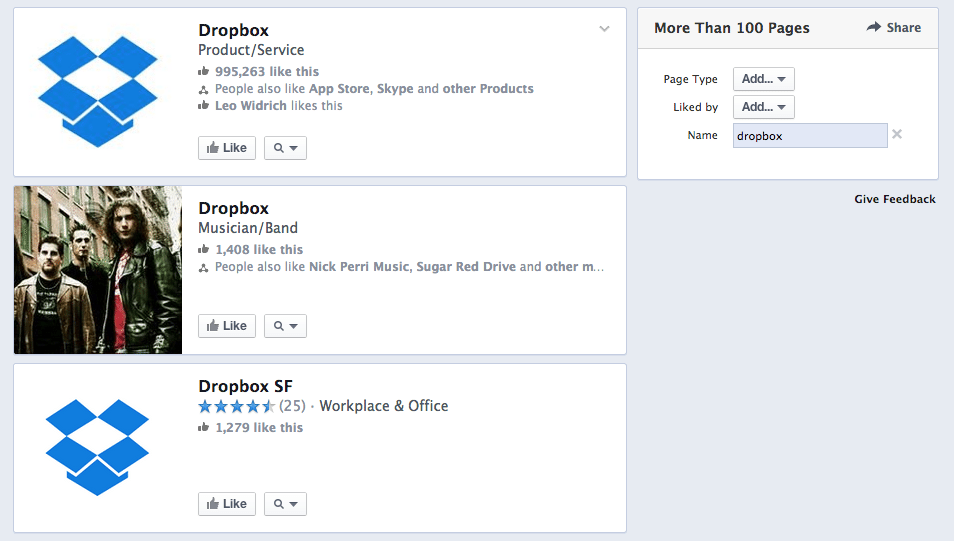The 15-Minute Social Media Audit Everyone Can Do

Former VP of Marketing @ Buffer
The word “audit” deserves more love than it gets.
When I hear the word, my mind goes straight to tax season and the manila envelope crammed with receipts and forms that I keep stashed away in the closet. Audits seem to equal anxiety, which is too bad – because not all audits are created equal.
A tune-up at the garage is essentially an audit for your car, a check-up at the doctor is an audit of your health. You can learn a lot from regular reviews like these.The same holds true for an audit of your social media marketing. You can learn a lot from an examination of how you manage (or don’t manage) your online brand. If it helps to think of a social media audit as something else—a marketing mastermind, maybe?—then so be it. Don’t let the word “audit” get in the way of checking in regularly with your social profiles. It’s easier and more helpful than you think.
Social media audits matter for everyone
Maintaining a social media presence can be a full-time job, which makes it kind of difficult if your full-time job requires your time and attention be spent elsewhere. Social media profiles can fall into disrepair quickly when left alone. An audit can help get things back on track.
On the flip side, there are those of you who actively maintain social media profiles and take great pain to keep everything updated and cohesive. Audits are helpful in these instances, too. They can serve as much-needed opportunities for reflection and growth.
Basically, audits are helpful for everyone, no matter where you’re at with your social media marketing.
Social media audit checklist
OK, I promised this would be easier and more helpful than you think, right? Well, following the outline below could mean a social media audit in 15 minutes or less. All the basics are covered here, and you can dig as deep as you choose to improve your social media marketing. This is what the audit should cover:
Examine your social media profiles
- Locate and document all your social media profiles, official and unofficial
- Check for completion of all details on these profiles and for consistency in imagery and message
- Follow up on your goals and compare performance today to performance one and two years ago
Examine those who do it well
- Find 4 to 8 niche influencers and examine how they manage their brand on social media
- Observe imagery and branding on each of their profiles
- Measure key metrics like followers and engagement
Locate all your social media profiles
First things first, where are you online?
This may seem like the easiest task in the history of social media tasks. Find where you are online? Piece of cake! I’d imagine you could list off your major social profiles with ease.
But what about the uncommon spots, those outside the Big Four of Facebook, Twitter, LinkedIn, and Google+? Did you create a YouTube page a couple years back on a whim? What new social networks did you try out when they were brand new and have never viewed again? Take note of them all. Outside of the Big Four, you might want to check these places:
- YouTube
- Tumblr
- Quora
Look also for unofficial accounts, either those set up by well-meaning employees and users or those created by rogues and spammers. Perform a general search for your brand on all the major social networks; you might be surprised what’s out there—fake accounts, employee pages, spam, etc. Here’s a quick view of what exists on Facebook for Dropbox—over 100 results.

As you locate your profiles, make note of the ones you find and keep track of the following elements:
- The social media network
- The URL
- Your profile name and/or description
- The number of followers or fans
- The date of your last activity
You can throw this information into a spreadsheet to keep it all organized and to give you a starting point for any follow-up audits you might want to perform down the road.
Here is what this section looked like for a recent Buffer social media audit:

Now that you have your list of locations, it’s time to prune. Make sure that your presence at these places is purposeful. You can consider asking some of the following questions to determine the necessity of certain profiles.
- “Why are we using this social account?”
- “Why do we want to use it?”
- “What are our goals for this social media platform?”
- “Are our target markets using it?”
If you no longer have a good reason to use the account or you find that your target market is elsewhere, don’t hesitate to cut ties and focus your effort where it is better spent.
Check for completion and consistency in details and imagery
After you have found all your social profiles, the next step is to give them a thorough once-over. Start by checking to see that the profiles have been completely filled out. Social networks offer a lot of customization these days, so it’s easy to miss a spot.
Are you using all three image locations on Twitter?
Do you have both types of logos uploaded to LinkedIn?

To be certain you have everything covered, it might be helpful to open the customize settings on each social network and review one-by-one to make sure that all images, text, and options are being used and optimized.

Your work here is not yet done. After making sure that your profiles are completely filled out—or, rather, during this process if you have lots of customizing to do—check to see that your branding is consistent across your social accounts.
- Are all avatars the same?
- Do backgrounds and other images follow theme/branding?
- Are all descriptions and URLs uniform?
You might find that it is best to have a different feel on different social networks—Twitter might lend itself more toward a laidback personality whereas LinkedIn might require a more professional presence. In this case, consistency doesn’t carry quite the same importance as making sure that the tone of the profile is right for the network. Think environment first and consistency second.

Follow up on your goals and metrics to see how you’ve grown
How is your social profile performing?
That is likely going to be one of the top areas of interest when you perform an audit. Is your social media marketing doing as well as you hope?
To follow up on this, you can check in with your past goals and the performance metrics you’ve created. These are likely to be specific to your business, but there are some common metrics you can measure:
- Your followers and fans. See how your audience has grown over time by using tools like Facebook’s page insights and Twitter’s Followerwonk.
- Your posting frequency. Is there any correlation to how often you post and how your audience grows?
- Engagement. Dig into how many conversations you have on a weekly basis. Engagement can include direct contact, retweets, likes, +1s, and reshares.
Again, this information can be organized into your main spreadsheet so you can see quickly at a glance whether or not your profiles are performing the way they should.
One helpful part here is benchmarking. How do these numbers compare to where you were a year ago? Two years ago?
Many stats and tools will go back this far automatically, so you get these numbers with relative ease. For the rest, be sure to document the important metrics today so you will have a baseline to return to the next time you perform an audit.
Examine the profiles of niche influencers and brands
Taking inventory of what others are doing in your industry can help you find ways to improve your own social profiles. You can learn a lot from those who do it best.
Begin by finding four to eight influencers or brands in your niche. You are likely to already know many people or businesses who exist in the same space as you and who tend to speak the same message to the same audience. If you need help rounding out this list, you can try tools like Traackr.
Once you have your list, you can go through the same steps that you did for your personal accounts.
Locate the social accounts for these influencers. You may find it helpful to see all the many different places they have a presence, or it could be more beneficial to focus just on the social networks you plan to use. You can make a new spreadsheet to track this or add to your existing audit spreadsheet.
You’ll find that a lot of the questions you ask about these influencer accounts are the same questions you asked for your own account. Generally, you will want to know the following:
- Branding: How does their overall look promote the brand? Can visitors get an accurate sense of their personality or culture? How have they chosen to use images in header and avatar?
- Popularity: How many followers/likes does the page have?
- Frequency: How often do they post? What do they do on weekends?
- Engagement: What is the number of people talking about the brand compared to the number of fans?
- Types of posts: What topics do they frequently discuss? What types of posts do they use: photos, questions, videos, chats, text? What is engagement like for each of these post types?
In certain cases, you might want to ask specific questions based on the network. For instance, what tabs are they using in the visible area on their Facebook page? These questions could be spurred by your own ideas and initiatives specific to your particular marketing plan.
Determine the goals you want to achieve
You’ve likely heard the phrase that knowing is half the battle?
This is absolutely true with an audit. When you take such a close examination of your profiles, you are going to have plenty of data on how everything is performing and where you can improve. So the next step is
to make a plan of action. Danielle Prager, writing for Unbounce, laid out a handful of measurable goals you can set for your social media accounts. Here are a couple of the big ones, plus a personal favorite of mine.Follower/Fan Growth – You can track this at a most basic level, i.e. writing down how many followers you have today and then seeing how many you have a week/month/year from now. For greater insight, you can use tools to see follower graphs over time. Buffer for business shows this growth for Facebook and Twitter plus LinkedIn and Google+, which are often more elusive sites to track.

(An example of the Google+ growth chart, via Buffer for Business.)
Increased engagement – This could look different depending on your network. For instance, Twitter engagement could mean @-replies (direct conversations with you) or @-mentions (tweets that include your handle but not at the beginning). Retweets, too, factor into the Twitter engagement formula.
Tools like Google Analytics, KISS Metrics, Rival IQ, and Facebook Insights can help make sense of engagement over time, or you can track this manually and follow-up during your regularly scheduled social media audit.
Content by type – This is one of my personal favorites. I love getting to know which types of content perform best—links, photos, videos, etc. At Buffer, we test our shared content by type, and we also dig a little deeper as we are interested to see what categories of content perform best. For instance, do we get more engagement with lifehacking or marketing posts? It’s possible the answer could be different at each social network.
The type of content that promotes engagement on Facebook may not have the same effect on your Google+ followers.
Along with follower growth, engagement, and content, there are other important social media metrics that we’ve written about before on the blog. Here are five of the ones we choose to focus on:
- Referral traffic from social
- Click rate on your social shares
- Your fanpage reach
- Your Twitter followers
- Your social influence score
In addition to these goals, your audit could also lead to more immediate action plans. You may choose to update your social background images or shift your focus to a network where more of your target market engages. Sure, the long-term measurement of these changes might not be the same as follower growth or engagement, but the improvement made to your profile is right in line with what audits are all about.
Insight into Buffer’s social media audit + a free template for you
I ran through the above audit with Buffer’s social media profiles, and I’m happy to share with you our results and my experience. The full spreadsheet can be viewed on Google Drive, and a screenshot is below.

Here are a few of our takeaways:
- I was really interested to find the Instagram, Pinterest, and YouTube accounts for Buffer, so I was grateful that I did a deep dive into the search tools to see what was out there.
- Some banner images needed updating on Google+ and LinkedIn, so I went ahead and copied over the banners that appear on our Facebook and Twitter pages. The Big Four now look much more complete.
- As far as analytics, I was blown away by how much growth we saw from LinkedIn over the past year—over 4,000 percent growth in referral traffic!
If you’d like to follow the blueprint that I did for this audit, please feel free to download and use our social media audit spreadsheet.
Have you performed a social media audit before? What did you learn? I’d be interested to hear your experience and thoughts in the comments.
P.S. If you liked this post, you might enjoy our Buffer Blog newsletter. Receive each new post delivered right to your inbox, plus our can’t-miss weekly email of the Internet’s best reads. Sign up here.
Image credit: Daniel Kulinski
Try Buffer for free
180,000+ creators, small businesses, and marketers use Buffer to grow their audiences every month.
Related Articles

Learn the fundamentals and advanced principles of Instagram marketing — with examples, expert tips, and timely best practices.
Here are the top 12 courses to improve your social media marketing skills.

A step-by-step guide to scheduling your posts to Bluesky, cross-posting to other platforms like X or Mastodon, and even creating threads.